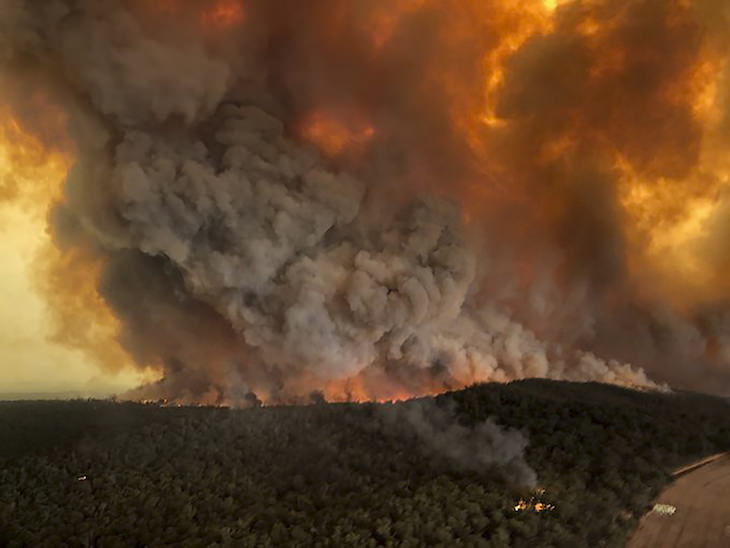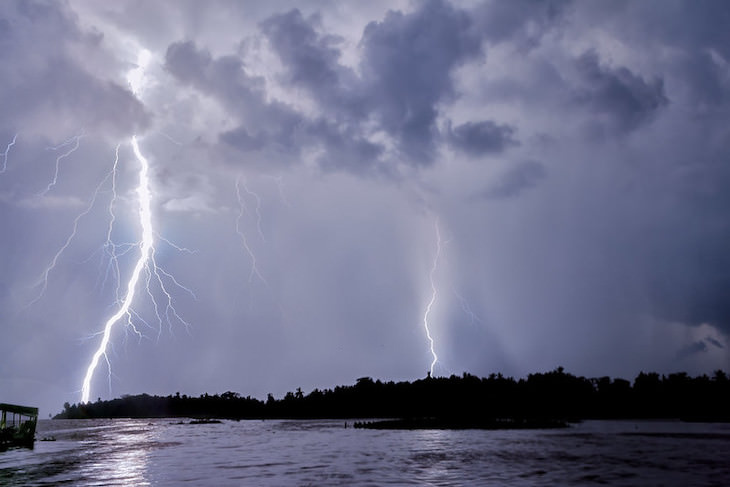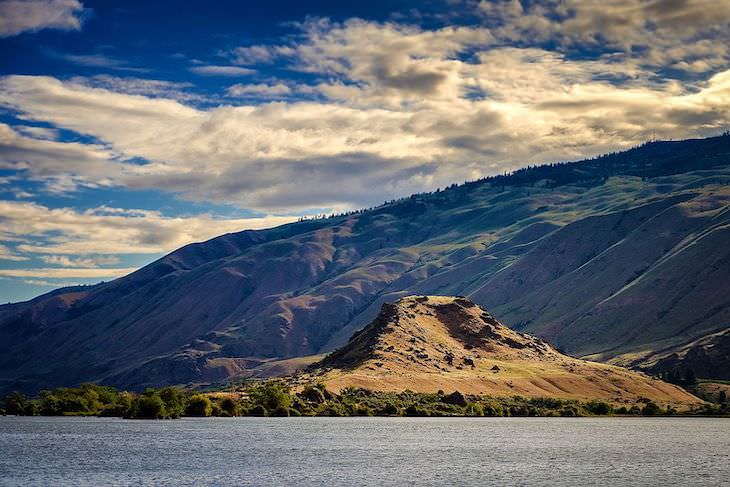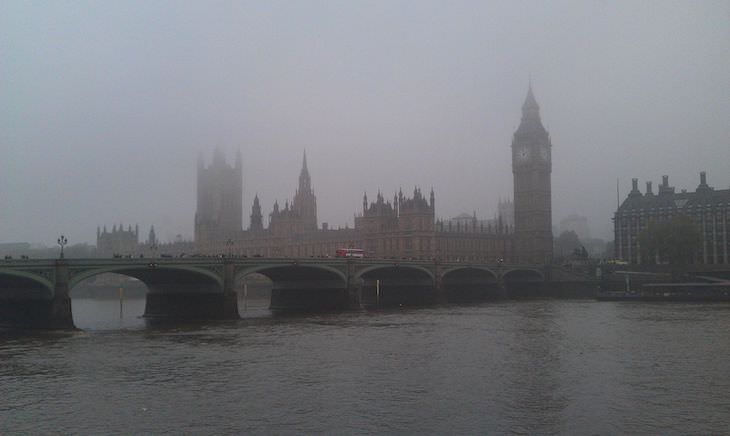
Mother Nature is powerful, and it makes sure to remind us of that every once in a while. No matter how smart and resourceful humans are, a volcanic eruption, great storm, or merely the vastness of the ocean will always remind us that we are but a small part of a big and mighty ecosystem.
In the article below, we listed a few memorable events where nature outdid even itself. From a rainstorm lasting a million years to toxic fog, these natural events broke records, changed lives, and went on to be remembered in history books.

Image Source: CT24zive / Twitter
The Australian wildfires of late 2019 to early 2020 were devastating in many aspects. The rapidly-spreading fires consumed roughly 46 million acres, an area about the size of South Korea. Around 3,000 homes were destroyed or damaged, and 34 people and countless animals lost their lives.
Sadly, another record was broken by the catastrophic fires - they had pushed more smoke into the atmosphere than any previous bushfire in history. To put things in perspective, the last time a similar amount of smoke was ejected into the atmosphere was during the second-largest volcanic eruption of the 20th century, which occurred in the Philippines in 1991.
A team of researchers from Guangzhou University in China found that parts of the Southern Hemisphere stratosphere warmed by 1-2 °C due to particle pollution from the smoke. This warming effect persisted for approximately six months after the fires.
Related: 20 Deadly Disasters That Affected People Around the World

Image Source: YouTube
On March 18, 1925, a deadly tornado cluster hit the United States, which tore through 3 states and left behind the longest track ever made by a twister - 219 miles (352 km). A tornado is a dark, funnel-shaped cloud containing air that is violently rotating, and usually travels at speeds of 20 to 40 mph. Tornadoes usually cover anywhere between one and 100 miles and their diameter can vary from a few feet to a mile.
Known as the Tri-State Tornado, the deadly twister of 1925 began its track in Ellington, Missouri, and then traveled through southern Illinois and into southwestern Indiana. It had a diameter of more than a mile, traveled at an excess speed of 70 mph, and had horrifying consequences. 164 square miles (425 square kilometers) of land and 15,000 homes were wiped out. By today’s estimates, the damages totaled $1.4 billion.
The estimated death toll was 695 people, making the Tri-State Tornado the deadliest tornado in US history. The storm was never graded, but experts believe it was an EF-5, the highest level of speed and strength possible on the modern tornado scale.

Image Source: Fernando Flores / Flickr
Do you know the saying “lightning never strikes the same place twice”? Well, whoever coined it has clearly never heard of Catatumbo, a mysterious region between Colombia and Venezuela. There, where the Catatumbo River meets Lake Maracaibo, the sky is regularly illuminated for nine-hour periods with thousands of lightning flashes.
Lake Maracaibo earned a place in the Guinness Book of World Records for “highest concentration of lightning” with 250 lightning flashes per square kilometer each year. The storms ease off in the dryer months of January and February and are most spectacular at the peak of the wet season around October. At this time of year, you can see an average of 28 lightning flashes each minute!
It isn’t clear why this phenomenon, known as Catatumbo lightning or the “everlasting storm”, occurs in this location. There are a few leading theories. One suggests that uranium deposits in the bedrock attract lightning strikes, and another suggests, that the air over the lake is highly conductive because it contains an abundance of methane from oil fields below. However, neither theory has been officially proven.

Image Source: Matt Hucke / Wikimedia Commons
Usually, big earthquakes are followed by smaller earthquakes that occur in the same general area in the days to years following the ‘mainshock’. They are referred to as aftershocks. In 1872, a powerful and mysterious earthquake shook Washington State. Because seismometers were not yet operating in the region at the time, the magnitude and exact location of the shock was never precisely determined, but it was undoubtedly an extremely strong earthquake. According to the Seattle Times, the quake was felt from Montana and British Columbia down into Oregon and Northern California.
What’s even more interesting is that during the following century the town of Entiat, Washington experienced a series of earthquakes, which researchers now believe to be aftershocks of the 1872 quake. The Entiat phenomenon is still being studied but it is likely the longest-lasting aftershocks in the world. They had been going strong for nearly 150 and counting.
Related: 7 Times the Weather Changed the Course of History

Image Source: George Tsiagalakis / Wikimedia Commons
London is known to be a foggy city, but no one expected the Great Smog of 1952. For five days, between December 5 and December 9, the city was covered in a thick haze, unlike anything the city ever experienced.
The Great Smog paralyzed the city. The visibility was so poor, flights were grounded and trains were canceled. People were unable to see their feet as they walked and drivers had to turn on their headlights even during the middle of the day. Many found the fog so blinding that they simply abandoned their cars. Conductors with flashlights had to walk in front of London’s iconic double-decker buses to guide the drivers through the city streets.
In 2016, the earliest suspicions regarding what caused the smog were confirmed - air pollution from coal emissions led to chemical changes in weather that ultimately laced the fog with sulfuric acid. The Great Smog was much more than a nuisance - it was lethal, particularly for the elderly, young children, and those with respiratory problems. Over 150,000 people were hospitalized, and the death toll, which at the time was thought to be 4.000 is sadly closer to 12,000. The smog was finally lifted when a brisk wind from the west swept the toxic cloud away from London and out to the North Sea. It remains the worst air pollution event in Europe’s history.

Approximately 233 million years ago, near the end of the Triassic Era, raindrop began to fall leading to a storm that would last for the following million years. This deluge became known as the Carnian Pluvial Episode (CPE).
To this day, little is known about what triggered the downpour. A study published in 2020 suggests it was most likely massive volcanic eruptions in what is now western Canada. It is believed that the CPE is largely responsible for the natural world as we know it today. The sudden arid conditions after the humid episode gave dinosaurs an environment where they could thrive. It wasn’t just dinosaurs, but also many modern groups of plants and animals also appeared during that time, including some of the first turtles, crocodiles, lizards, and the first mammals.
Found this article interesting? Share it with others!